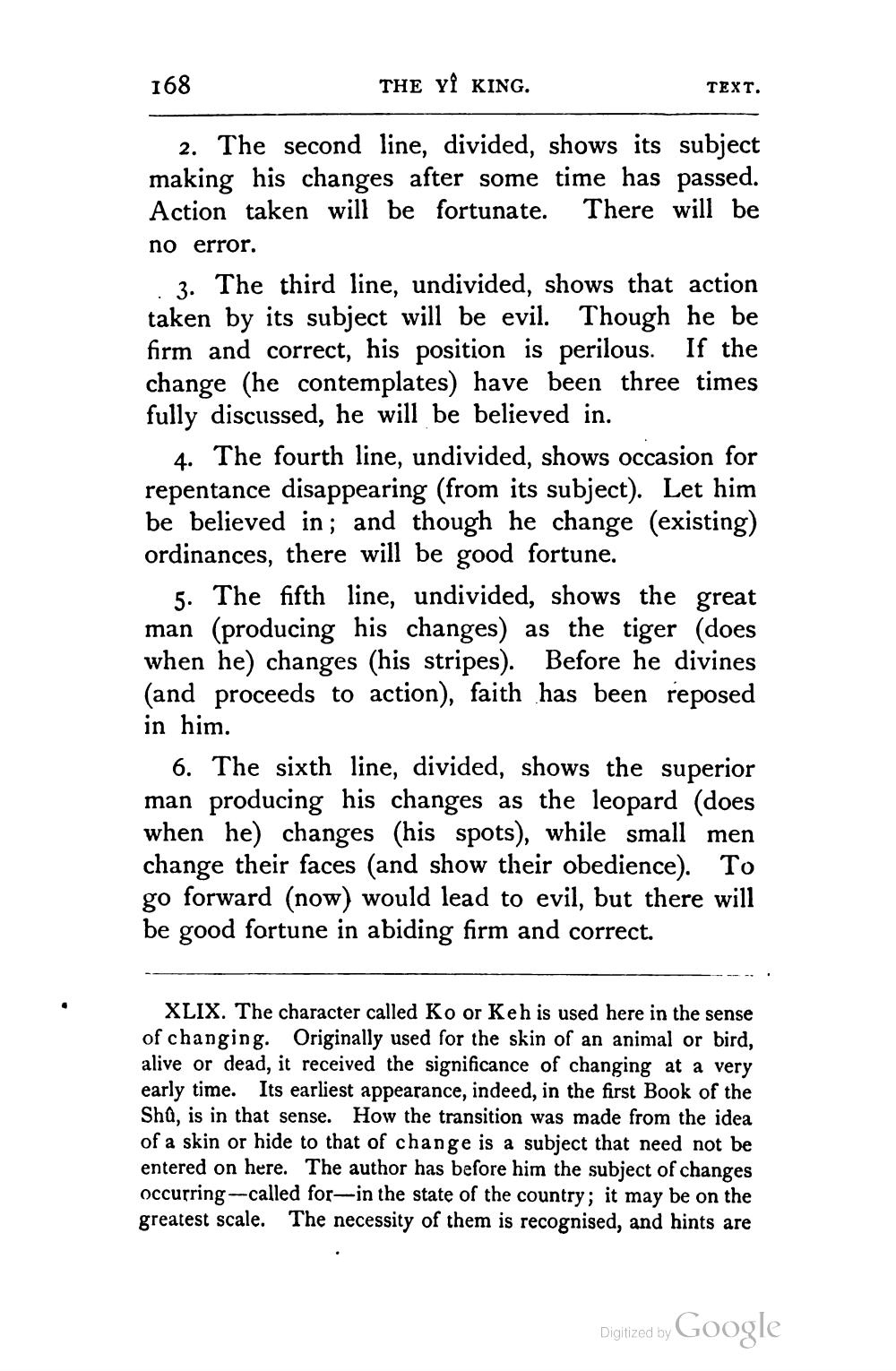________________
168
THE YÎ KING.
TEXT.
2. The second line, divided, shows its subject making his changes after some time has passed. Action taken will be fortunate. There will be no error.
3. The third line, undivided, shows that action taken by its subject will be evil. Though he be firm and correct, his position is perilous. If the change (he contemplates) have been three times fully discussed, he will be believed in.
4. The fourth line, undivided, shows occasion for repentance disappearing (from its subject). Let him be believed in; and though he change (existing) ordinances, there will be good fortune.
5. The fifth line, undivided, shows the great man (producing his changes) as the tiger (does when he) changes (his stripes). Before he divines (and proceeds to action), faith has been reposed in him.
6. The sixth line, divided, shows the superior man producing his changes as the leopard (does when he) changes (his spots), while small men change their faces (and show their obedience). To go forward (now) would lead to evil, but there will be good fortune in abiding firm and correct.
XLIX. The character called Ko or Keh is used here in the sense of changing. Originally used for the skin of an animal or bird, alive or dead, it received the significance of changing at a very early time. Its earliest appearance, indeed, in the first Book of the Shû, is in that sense. How the transition was made from the idea of a skin or hide to that of change is a subject that need not be entered on here. The author has before him the subject of changes occurring ---called for-in the state of the country; it may be on the greatest scale. The necessity of them is recognised, and hints are
Digitized by Google




